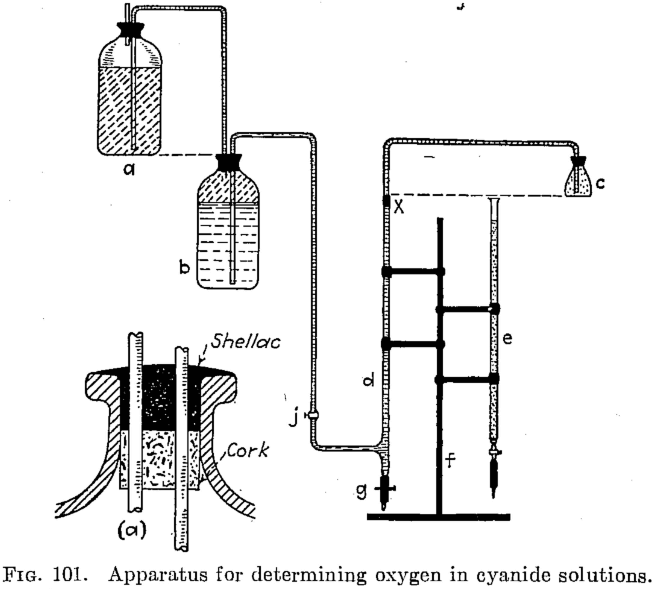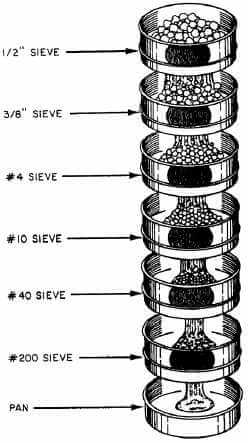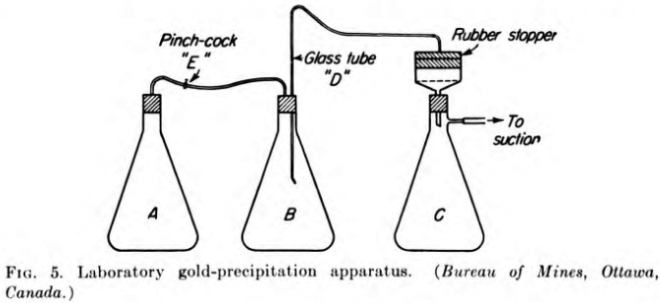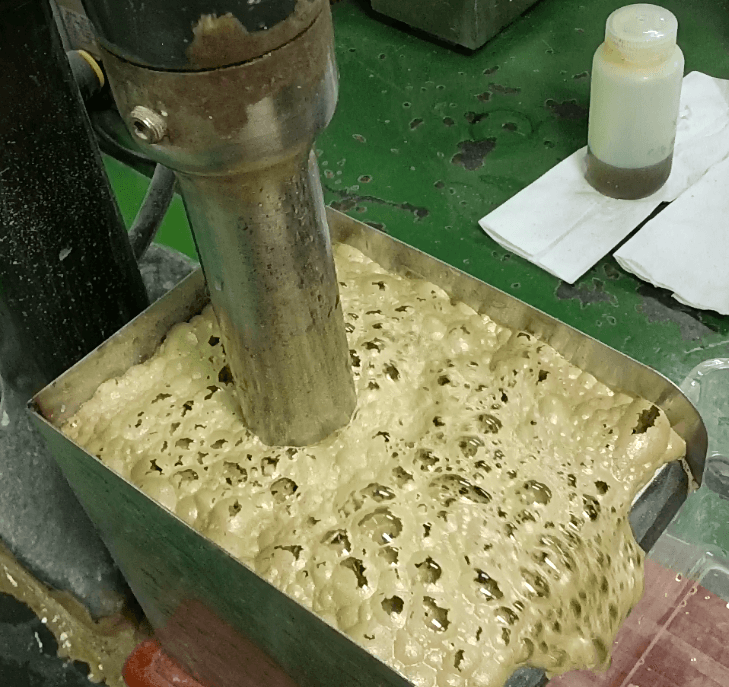Measure the Oxygen Content of Cyanide Solutions

Two methods for determining the oxygen content of cyanide solutions are offered as being simple and accurate. White’s method is a colorimetric one, depending on the degree of coloration imparted to a solution of pyrogallic acid in the presence of caustic soda. Weinig and Bowen’s method, a modification of that of Schutzenberger, depends on the reducing […]
Free Lime CaO Determination Protective Alkalinity
It is important to know the free, or available, CaO in burnt or hydrated limes, especially for the laboratory determination of lime consumption in cyanide tests. The so called sugar method is a convenient one and is widely used. It is based on the solubility of the CaO present in sugar solution. The carbonates and […]
Thiocyanate Assay Determination
Determination of Thiocyanate by Colorimetric To a 100- cc Nessler tube add 50 cc water and 5 cc (more if necessary) of the cyanide solution to be tested, then add 2 cc HCl and 10 cc of 5 per cent solution of ferric chloride, FeCl3 Mix, and dilute to the 100-cc mark with water. If Prussian […]
Determination of Total Cyanide
Total cyanide is a term used to indicate, in terms of NaCN (or KCN), all the cyanogen existing in the form of simple cyanides, hydrocyanic acid, and the double cyanide of zinc. Procedure. Measure 25 cc of clear cyanide solution, add 10 cc of caustic soda-potassium iodide solution, and titrate with standard AgNO3 solution to […]
Free Cyanide Determination
You will perform this titration to obtain your Free Cyanide Determination. Take a 10ml aliquot of pregnant liquor. Make aliquot to 60ml with distilled water. Add 3 ml KI (10% solution) Add 5 ml of 1.5% NH4OH Titrate with 0.10 N Ag NO3 then; titre/100 = %CN Note: The endpoint is indicated by the first […]
Infrasizer

Because of the extremely fine grinding necessary to liberate the gold values, closer control than that obtained by screens was found to be necessary, and Professor Haultain’s “Infrasizer” was successfully adopted as a plant-control and research device. A brief description of the instrument is found in “Fine Grinding Investigations at Lake Shore Mines” {Trans. 42, […]
How to Perform a Sieve Analysis

For particle size analysis, the test sieve remains a cost effective and precise measuring instrument for dry non-agglomerated particles. Test sieve analysis is widely used for quality control in many industries worldwide, the test sieve process is a simple and common practice to measure particles size and dry relatively free flowing materials. This here assumes […]
Gold Precipitation Test

The following method of testing the precipitation of gold in pregnant cyanide solutions has been adopted by the Ore Dressing and Metallurgical Laboratories, Bureau of Mines, Ottawa. The apparatus consists of three Erlenmeyer flasks of 3000-cc capacity (see Fig. 5). Flask A is for evacuation of air from the pregnant solution, flask B is for precipitation, and […]
Gold Flotation Tests

The first gold flotation testing should be confined to an all-flotation method so that the experimenter can become familiar with the ore. Careful observation, coupled with experience in testing, will enable the operator to interpret the various phenomena. It is desirable that he shall have had practical operating experience so that he may know the […]
Prepare Gold Ore Sample for Laboratory Testing
Before an ore is tested for its amenability to the cyanide process, it should be subjected to a preliminary examination in order that the experimenter may become familiar with its general physical and chemical characteristics. Knowledge so obtained will be of value in laying out the most effective testing program and may point to special […]
